Welcome To The Kiki Ball: The Next Gen Ballroom Scene
Photographer Rebecca Smeyne photographs the NYC kiki community, a thriving off-shoot of the ballroom scene.
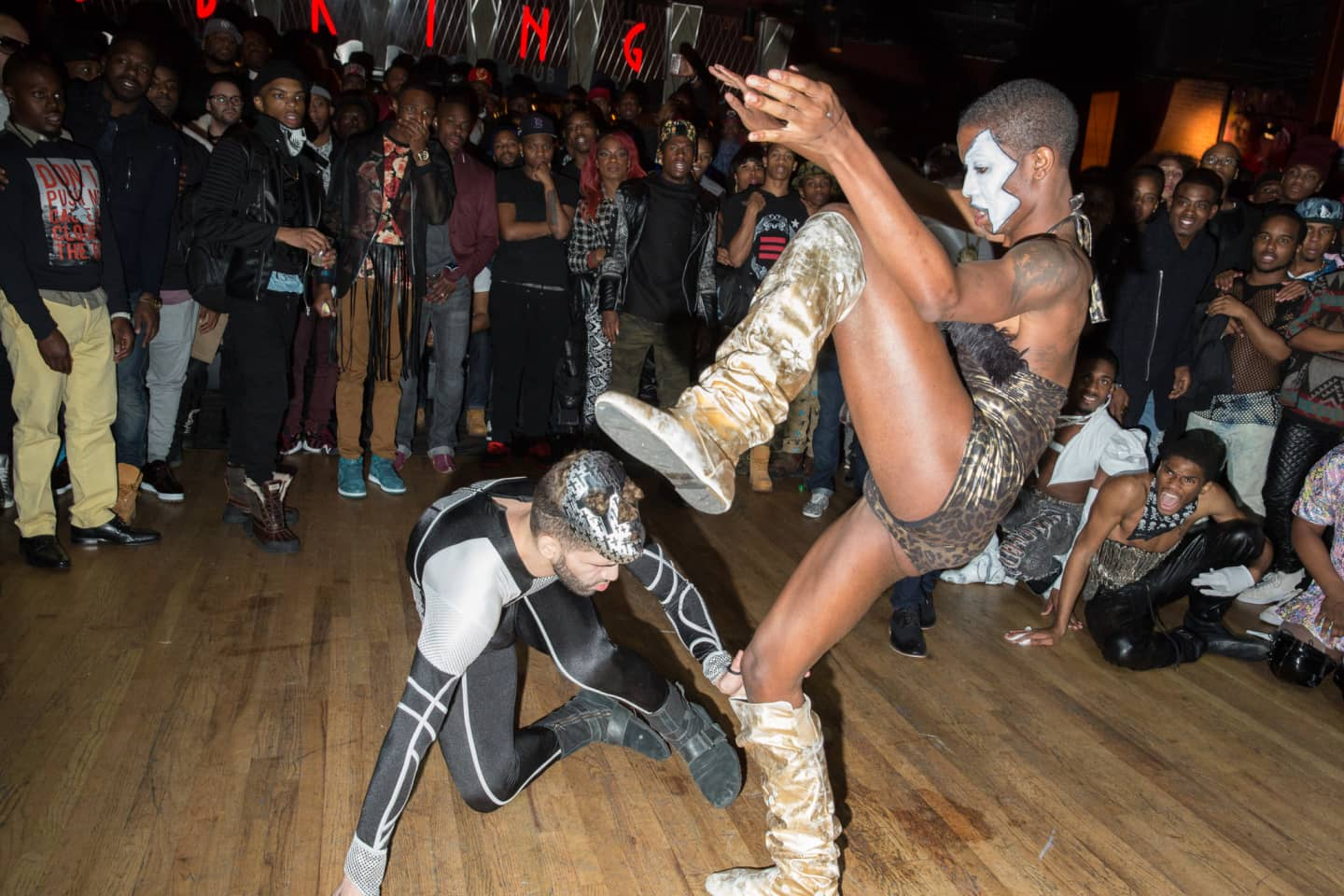
In a post-Paris Is Burning world, New York's ballroom scene needs no introduction, but over the past decade a subculture within the subculture has arisen. The kiki scene originated from social gatherings—"kikis"—at health outreach organizations, such as the Gay Men's Health Crisis and Hetrick-Martin Institute, where members of the ballroom community could get together to socialize and practice for the mainstream balls, as well as get connected to HIV prevention services, testing and counseling. Through these kiki functions, they started to develop their own separate system of houses and balls, which mirror the structure of those in the mainstream ballroom scene. Today the kiki scene provides a place for younger members of the ballroom scene to gain exposure, competition and leadership experience, all against a continued backdrop of safe-sex messaging.
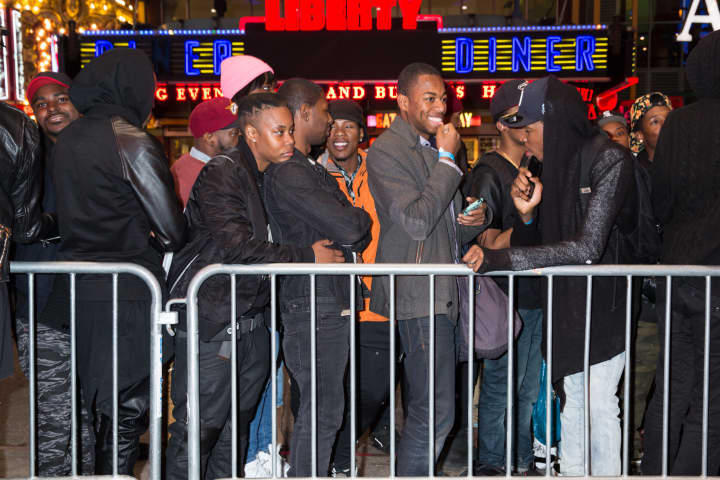 Guests waiting in line outside BB King’s before the 9th Annual Kiki Legends Ball.
Guests waiting in line outside BB King’s before the 9th Annual Kiki Legends Ball.
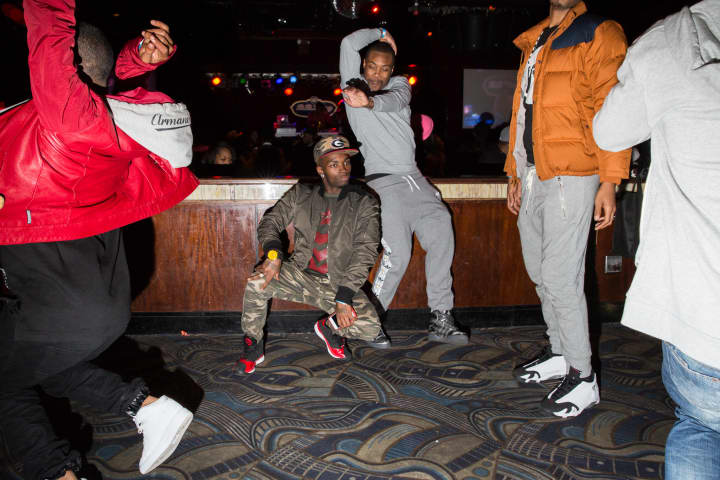 Legendary Jymeek Ebony (center) warming up with friends before the ball begins.
Legendary Jymeek Ebony (center) warming up with friends before the ball begins.

"In the past few years the kiki scene has really grown, particularly because of its resources which are usually non-profit organizations," says Qween Beats Symba McQueen, the MC for most—if not all—NYC kiki balls. "The kiki scene transformed to cater to YMSM [young men who have sex with men] who are black or Latino between the ages of 13-24. The mainstream is usually filled with older members and they do not have the resources that young people have. A young person can go and connect with a CBO [community based organization] to 'throw a ball' and it can happen because they either have the space or funds for a space. The mainstream will need to pay out of pocket and venues are costly, also there is a higher expectation on how venues look for mainstream [events]. That doesn't mean that the kiki scene works less or doesn't want the ball to be just as 'fab.'"
Today, the kiki scene in New York is even more active than the mainstream scene, with approximately six active houses—it's a fluid number, as houses open, close and merge over time—and 25 kiki balls per year. While the scenes are mutually exclusive, people can simultaneously belong to both a kiki house and a mainstream house, and sometimes even a women's house, another subset within the community.
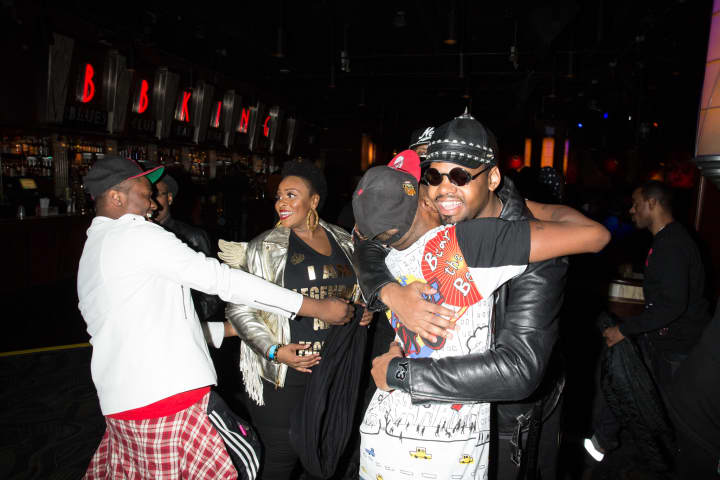 Legendary Aisha Diori, a key figure in the development of the kiki scene, and Alexander Rappaport greet some arriving friends.
Legendary Aisha Diori, a key figure in the development of the kiki scene, and Alexander Rappaport greet some arriving friends.
It's a very supportive community. The ball scene arose in the first place largely because of the need for this demographic—mostly black and hispanic LGBTQ individuals—to have a place where they could be accepted, supported and recognized. The awards element of the balls reinforces this core function.
"Jonovia is one of the most influential persons in the community. She works with the Heat Program and is an advocate and activist for trans-women. She also caters to the community giving awareness on the HIV/AIDS epidemic we continue to face today and providing resources and services." Qween Beats Symba McQueen
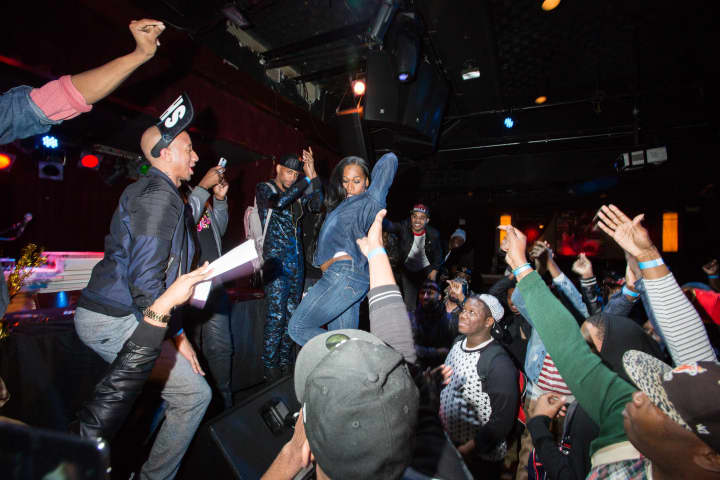 The crowd cheers for Jonovia.
The crowd cheers for Jonovia.

"Kiki is a vague expression," says McQueen. "It can be expressed in different manners depending on the context of the environment." It can mean something is fun, or it can be a loose term for hanging out. As far as the scene goes, "kiki is just an imitation of the mainstream ballroom community."
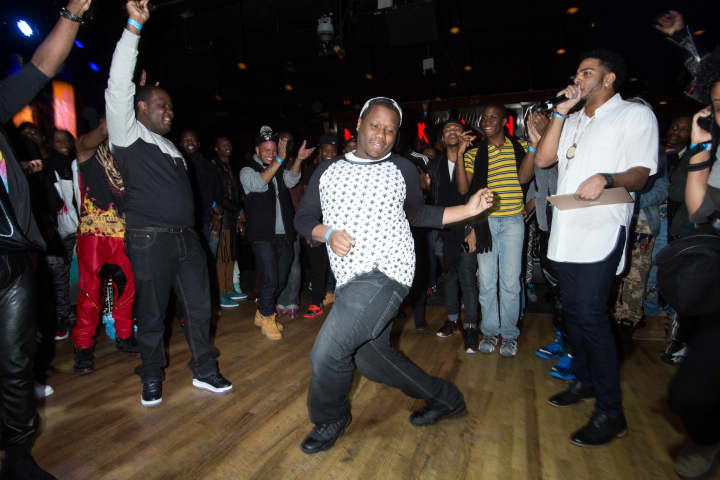 Neko Old Navy comes out to accept his new title of Legendary Founder for his work starting the Kiki House of Old Navy.
Neko Old Navy comes out to accept his new title of Legendary Founder for his work starting the Kiki House of Old Navy.
Starting just before midnight on Sunday, the 9th Annual Kiki Legends Ball took place at BB King's in Times Square. Most kiki balls happen during the day at venues such as community centers and community college gymnasiums, because such venues are more affordable and also don't have the same age restrictions as nightclubs. However, this year the Legends Ball was co-sponsored by a mainstream house—the House of Miyake-Mugler—as part of their 25th anniversary ball weekend (their mega-event in Queens on Saturday night drew the likes of Rihanna and FKA Twigs). This marked the first time a kiki ball was formally affiliated with a mainstream ball. Both balls shared the same theme, Porcelain, through which competition categories were interpreted.
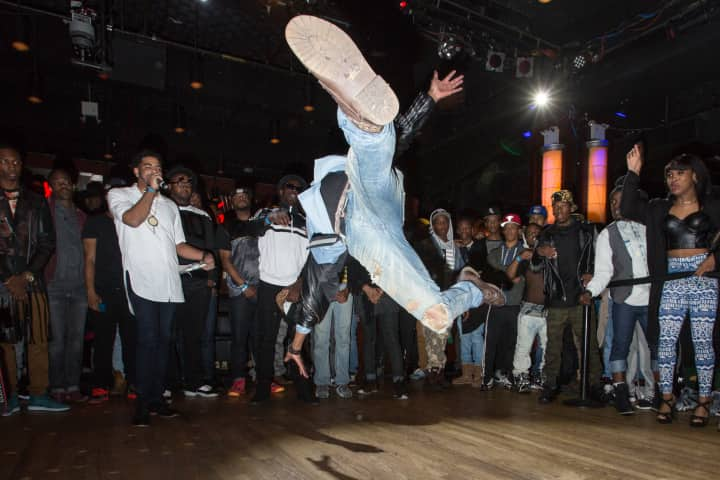 A dancer showcases his moves during the ball, before the competition categories begin, with commentator Qween Beats Symba McQueen on the mic behind him.
A dancer showcases his moves during the ball, before the competition categories begin, with commentator Qween Beats Symba McQueen on the mic behind him.
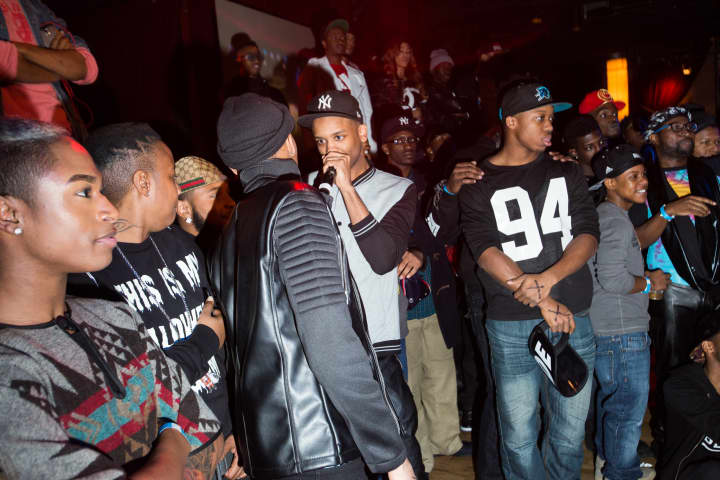 Legendary Icon Kamari Miyake-Mugler on the mic during the ball. Kamari organized the Legends ball, along with Legendary Icon Lil Mama Lorenzi.
Legendary Icon Kamari Miyake-Mugler on the mic during the ball. Kamari organized the Legends ball, along with Legendary Icon Lil Mama Lorenzi.

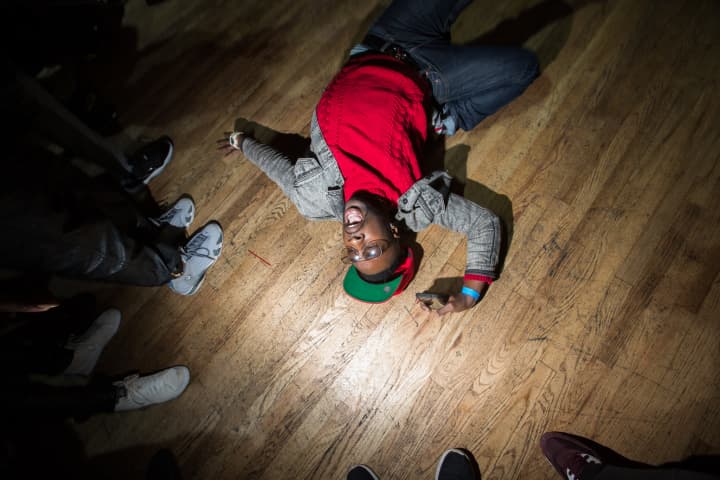 "This is Mimi, who was deemed [a] new legend when he came out for this. The segment in the beginning is called LSS (Legends Statement and Stars)." Qween Beats Symba McQueen
"This is Mimi, who was deemed [a] new legend when he came out for this. The segment in the beginning is called LSS (Legends Statement and Stars)." Qween Beats Symba McQueen
To be named a legend or icon is a huge honor, and people get really excited to see their fellow scene members get recognized in this way.
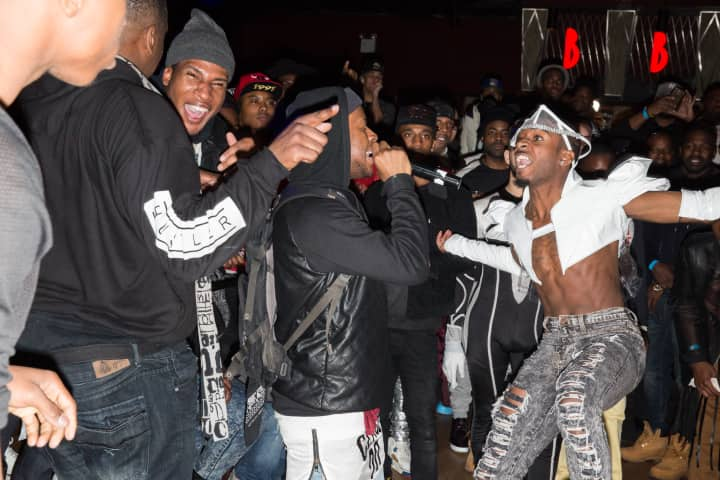 Competitor in the OTA performance category, themed “The Moon Walkers."
Competitor in the OTA performance category, themed “The Moon Walkers."
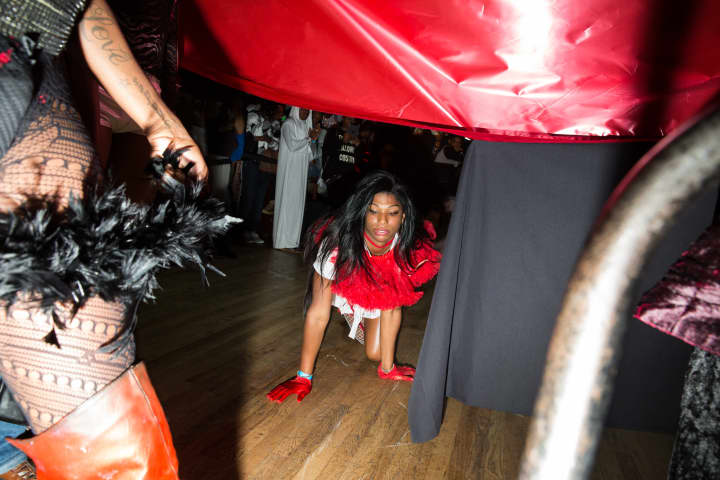 Members of the House of Miu Miu about to enter the Grand March as a House category. In the Grand March category, the house unveils their members in dramatic fashion—often rolling them out on a cart behind a sheet before walking the runway.
Members of the House of Miu Miu about to enter the Grand March as a House category. In the Grand March category, the house unveils their members in dramatic fashion—often rolling them out on a cart behind a sheet before walking the runway.

 Competitor in the OTA performance category, themed “The Moon Walkers."
Competitor in the OTA performance category, themed “The Moon Walkers."
As described in the ball invite, OTA runway competitors should "dress up to show off some of the most exotic creatures on your planet. Show us what your planet considers to be an exotic beauty, even if they are a monstrous beast.”

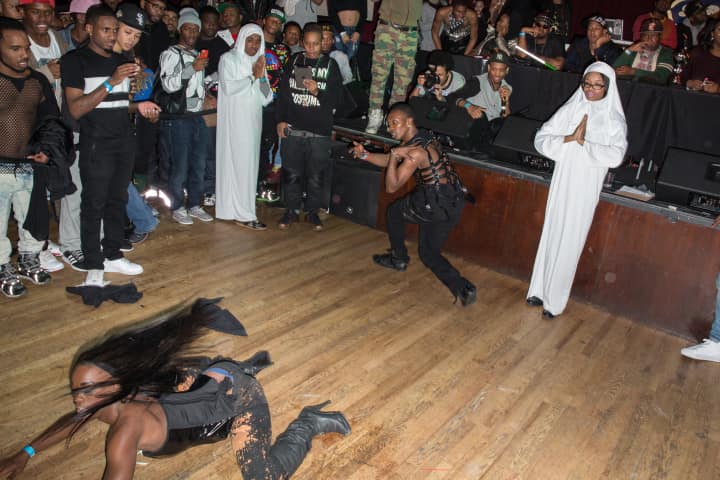 House of Miu Miu founder Tyshawn and co-founder Nyeema compete in the Grand Prize category.
House of Miu Miu founder Tyshawn and co-founder Nyeema compete in the Grand Prize category.
"This ball wrapped up a series of three balls prior through a point system. In this ball each category were also for points and the winning house with the most points was the House of Miu Miu. They won $1000 because of that, and the grand prize trophy," says commentator Qween Beats Symba McQueen.

Rebecca Smeyne started photographing the New York ballroom scene's mainstream balls in 2008, but for the past year has been focused on shooting the kiki scene. With special thanks to Qween Beats Symba McQueen, Lil' Mama Lorenzi, Twiggy Pucci Garcon, Kamari Miyaki-Mugler, and Jorge OldNavy Milan.
Full size photo captions:
1. Faith Lorenzi-Ebony posing for a portrait before the ball.
2. "This is the legendary Chantel Juicy, she is one of the 'face' girls who have been reigning this category for years." Qween Beats Symba McQueen
3. Waiting for the ball to begin.
4. Competitors in the OTA performance category, themed "The Moon Walkers."
5. Qween Beats Symba McQueen presents the Grand Prize trophy to the House of Miu Miu.